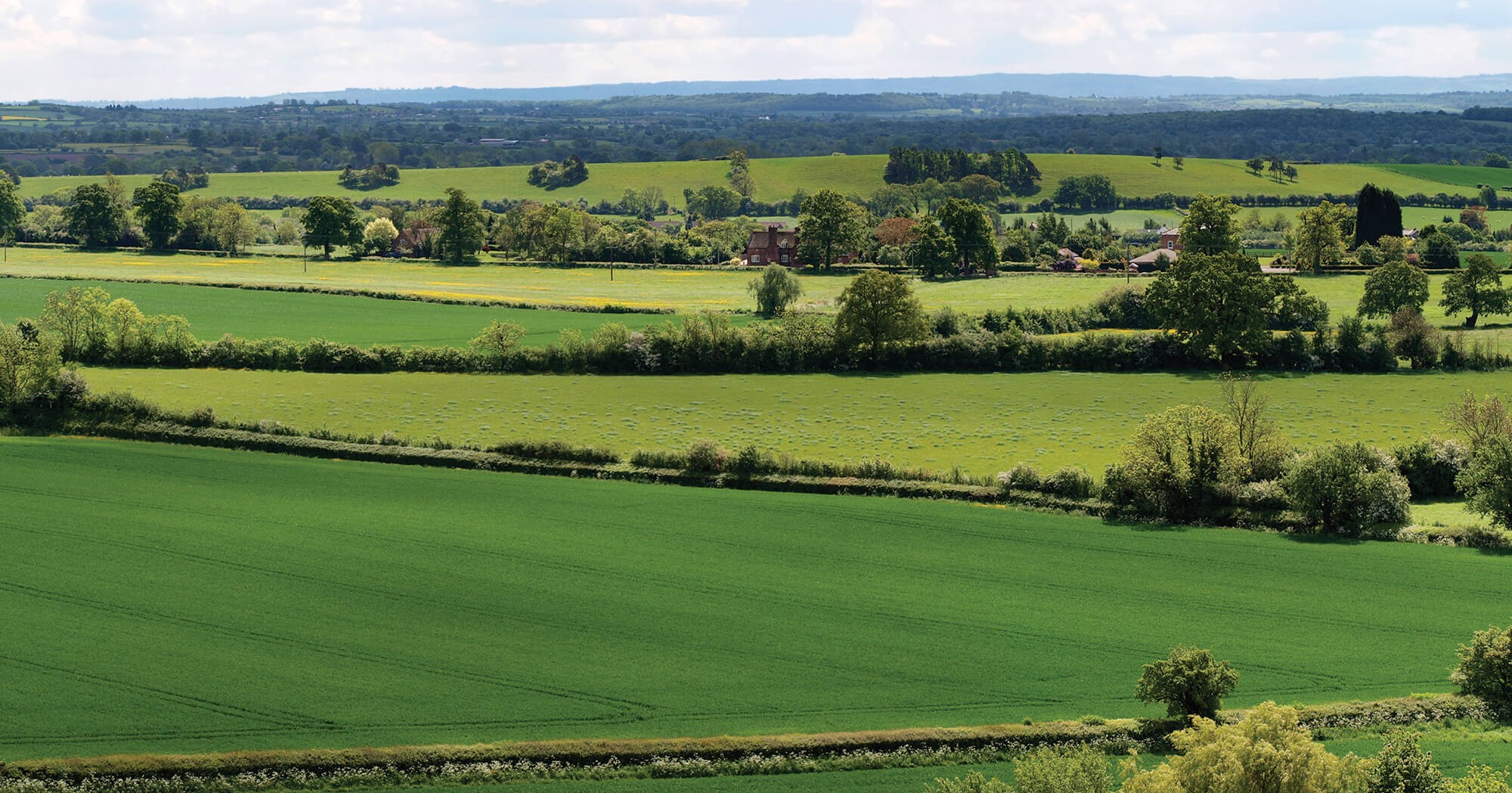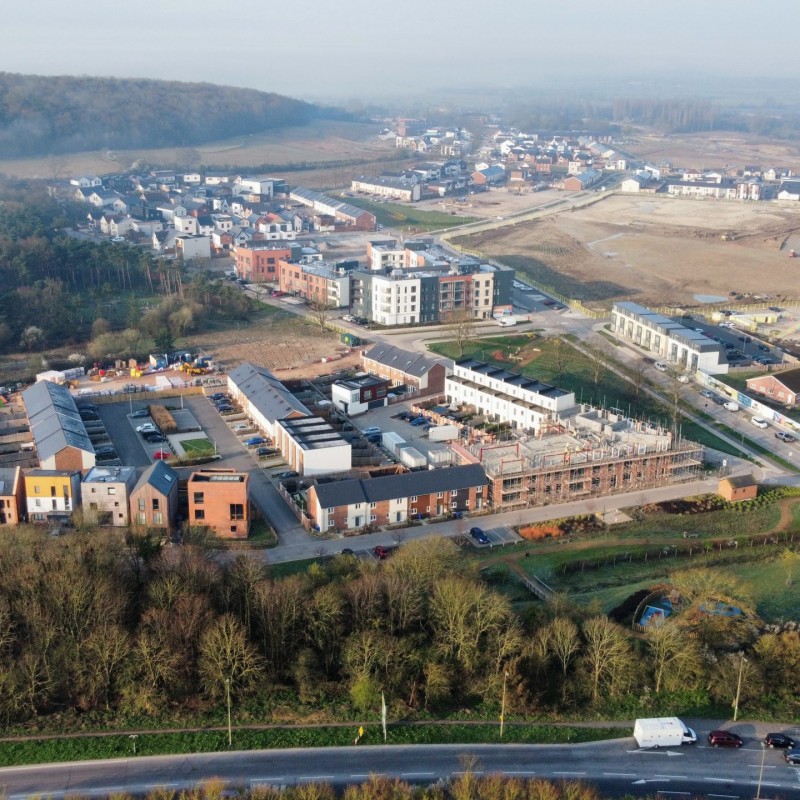Build It Live is the perfect place to come to find the answers to your questions, speak to industry experts and gain the knowledge and inspiration you need to make your project a success. Before you come along, gain some top tips below – put together by the experts at Build It magazine.
How to find land
Sometimes, it can take years to find a plot – especially if you need one of a particular size, or you’re buying in an area where land is scarce. You may need to revise your goals if the search isn’t going well. Be prepared to be flexible and dedicate your time and energy to the task. Take a look at our below advice, to be in with the best chance of success.
Select a specific area
Often, people make the mistake of searching too wide an area. If you fail to focus your search to a manageable geographic location, you may become overwhelmed by options. It’s far better to select an area where you want to live and blitz it.
Research your preferred area
Hunt for potential plots by driving through your chosen area, or even taking a walk. Keep an eye out for potential plots. This could be brownfield sites, infill sites, side gardens or even disused garage blocks, that all might have potential.
Speak with locals
By speaking with locals, you might find someone willing to sell land to you. Knock on doors and enquire – or write them a letter introducing yourself as a potential purchaser. They might not realise they’re sitting on a potential source of revenue and might be more than happy to sell.
Talk to the local council
It’s also worth keeping an eye on planning applications in your target area, too. Local authorities are obliged to publish a register on their websites, so you could browse these to see if the applicants are looking to sell the plot on. After all, a plot with planning permission in place is highly sought-after. You can then write to the applicants and ask if they’re interested in selling.
Where to find a plot
How about alternative options? Well, there are plenty of places you can look for a potential building plot. These are just some of the main options:
Estate & land agents
Start by registering your interest with estate and land agents in the area you’re searching. You could also approach local surveyors and architects, as they’ll be informed about new plots early and might have some titbits for you.
The internet
The internet is obviously a fantastic source of viable building plots. Begin by registering with Plotsearch – a site with thousands of land listings ready for you to browse and buy. Property-hunting sites, such as Rightmove, are also great. You can refine your search to ‘land’ only and if you download the app, you’ll be able to save searches and sign-up to area notifications.
Real estate auctions
Vacant plots suitable for self building, and rundown homes that could be demolished or renovated, are regularly sold at auction. Well-known online auction sites include Allsop and Savills. Often, local areas will have their own, too, so do your research and you could bag yourself a bargain.
The Right to Build register
The Right to Build legislation means councils in England now have a duty to grant planning permission on enough serviced building plots to meet the demand of those signed up to their local Right to Build register. Sign up to register your interest, but be aware that some councils charge for the service.
Serviced plots
In recent years, companies and organisation across the UK have started offering serviced plots for those looking to self build. With a serviced plot, a specialist developer, council or landowner will sell off individual plots, generally on a single site, so that locals can create their own custom home. These building plots usually come with electricity, water and drainage already in place, as well as planning consent, taking some of the hard work out.
Graven Hill
Graven Hill is the UK’s largest development for self builders and sells serviced plots in rural Oxfordshire, just down the road from our Build It Live Bicester show. In fact, Build It Live Bicester takes places in association with Graven Hill, so you can come to the show to speak with the team and even reserve a plot of land at the site. These plots come with plot passports and planning permission can be achieved in a matter of weeks.
Types of self build plot
There are various types of plots out there, so it’s handy to understand what each means and what restrictions might come with such a piece of land.
Buy to demolish
A great way to obtain a quality piece of land, buy to demolish essentially means you’re purchasing an old house that can be torn down in order to make way for a new build. This route is popular because it’s usually cheaper than renovating an existing property, despite the fact that demolition fees can be more than £10,000. Plus, you’re less likely to be shocked by hidden costs when knocking down and starting again, and VAT is reclaimable on new builds but not renovations – another plus.
While you’ll inevitably generate a lot of waste by demolishing an existing building, you could consider reusing some of the materials, such as bricks, or selling them on as salvageable materials for others to use. Be aware that with buy to demolish land, you might be required to build to the same height and footprint as the building you’re knocking down.
Brownfield sites
The government likes to build new housing on brownfield sites, so local councils usually look favourably on plans for this type of plot. These previously developed pieces of land are great because, for the most part, services will already be in place. Another benefit is that brownfield sites are generally relatively affordable to buy, but you might need to pay to have a building on the site demolished.
You’ll also probably need to apply for a change of use license, and design restrictions may be imposed. For example, you may have to maintain the footprint of the previous building. New legislation also requires councils in England to keep Brownfield Registers and use these to identify potential plots – another bonus.
Greenfield sites
A greenfield site is a piece of land that has never been built on before. While it’s not impossible to gain planning permission to build on greenfield land, if it lies within the protected green belt, your chances could be low. You’ll always be more likely to receive planning permission for an extension to an existing property, or for a buy to demolish scheme.
Garden plots
The Planning Policy Statement PPS3: Housing advises that ‘options for accommodating new housing growth may include additional housing in established residential areas’. This includes building on existing gardens. Infilling and small-scale development in a garden is possible, and one-off houses are likely to be preferred over multiple homes on a single plot, so self builders could be in with a good chance of securing consent. In fact, a lot of self builders choose to create a new home on their existing garden.
Designated areas
Self building in locations with special designations, such as conservation areas, will always be subject to restrictions. In fact, you’re very unlikely to be granted planning permission for a new home on such a site, or even buy to demolish in some areas. Renovation opportunities are a safer option, but you’ll find that permitted development rights are often severely restricted, too. Buy with caution!
How much might a plot of land cost?
When it comes to self building, your plot will be the biggest purchase you make and in areas where plots are rare and prices higher, land will inevitably be more expensive. Therefore, you need to be realistic about what you can get for your budget. The ‘perfect’ plot, will likely be hard to find and expensive, so you may need to compromise in order to secure a piece of land.
How Build It Live Can Help
So, how can you benefit from a visit to Build It Live? Well, at the show, we’ll have experts on hand all weekend, providing advice on finding land – and much more.
Ask Our Experts
Don’t miss the chance to book a one-to-one appointment with one of our experts, at the Ask Out Experts lounge. Bring your plans, if you have some, and don’t forget your list of questions. They’ll be able to provide you with personalised advice and give you all the information you need to find the perfect piece of land, and even how to go about getting planning permission to build on that plot.
Seminars & Workshops
We’ll also have dedicated seminars on each day, covering a variety of essential self build and renovation topics, including how to find the perfect plot and secure planning consent. A range of industry experts and suppliers will also be taking to the Workshop Theatre stage, to host a range of talks. These workshops cover all kinds of important topics, such as how to finance your build and the government’s new Help to Build Scheme. Topics vary at each show, so keep an eye on the schedule.
Self Build Training sessions
At the show, you can take part in a free taster session of Build It’s Self Build Virtual Training academy, an interactive series of online courses that’s run in partnership with Potton’s Self Build Academy. Each session is presented by Build It’s expert contributors and Potton’s highly experienced self build team.
At Build It Live, come along to a taster session to discover what you can expect from a full training session with the academy. Build It Live features short, 20-minute taster sessions of the courses. These cover topics such as How to Appraise, Value & Buy a Building Plot – and much more!
Exhibitors
At every Build It Live show you’ll be able to meet hundreds of suppliers and companies, browse thousands of products and gain the advice and inspiration you need. Explore our full list of Exhibitors here and make a list of all the companies you’d like to meet during your trip.
Explore our full show line-up today and start planning your visit.







